Have I mentioned that I love Thinking Maps?
Prior to this year I had only heard about them. In fact, in
my former district Thinking Maps training was reserved for ELL teachers only.
Whenever I hear that something is reserved for ELL teachers only, I immediately
think, that must be a good teaching
strategy. Ever heard of the SIOP Model? Same thing – if done right, it’s a
best practice framework that basically ensures high quality instruction and big
student gains for every learner.
Anyway, back to Thinking Maps. This year, in a new district,
I was able to not only sign up for and take a Thinking Maps course, but also a
Write From The Beginning (WFTB) course. For those of you that don’t know, WFTB
is a writing program that uses Thinking Maps to teach and facilitate writing.
There are grade level specific mini-lessons, goals, and rubrics. I used it primarily for my nonfiction
writing. I am such a Lucy Calkins and Teachers College Reading and Writing
Project fan girl that I don’t think I ever could, or ever would want to give up
my Writing Workshop. I guess what I’m saying is that my first graders wrote,
and wrote, and wrote using both of these models.
 With first graders, the Circle Map is your best friend. Circle
maps are used to define in context or brainstorm. They are great for assessing prior knowledge
and reviewing at the end of a unit.
With first graders, the Circle Map is your best friend. Circle
maps are used to define in context or brainstorm. They are great for assessing prior knowledge
and reviewing at the end of a unit.
Circle Maps were instrumental this year across my
curriculum. In reading, I used it as a
way to let students practice distinguishing beginning letter sounds. I also used it as a way for my students to practice
telling the difference between short and long vowel sounds. Notice that you can print them in black and white or color.
Click on the picture to find this in my TPT store.
Another way I love to use Circle Maps is in math.
Like most teachers I am constantly spiral reviewing all the math that we’ve previously learned... or at least supposedly learned. (Hence why we review, review, review!) This year I used several different Circle Map templates to help me do
this. I started very simple and then built up to some of the more involved templates that you see below.
In the large example below where the number of the day is 8, you can see that I've included a section entitled Hundreds Chart. Because I use the hundreds chart so much in my classroom and it's so important to me that my students understand how to use it, I begin the year by having students simply show me where a number is on the chart. This isn't something that I've seen any other teacher do and I included the example to clear up any confusion. (IE, "What is that blank rectangle doing there?") On a side note, my kiddos loved getting to "scribble-scrabble" out lines for the rest of the chart once they've found and circled where the number of the day is. Of course, it's a rough estimate of where the number would be found. We do a lot of practicing and I do a great deal of modeling my thinking on how I go about figuring out where a number is on the hundreds chart. This is a perfect time for non-examples and to open up the dialogue around justifying your answer. (IE, "I know that 8 isn't going to be in the middle of the chart because the chart goes to 100. The middle of 100 is 50 and 8 is nowhere near 50.")
Once my students can confidently find numbers on the hundreds chart I bump them up to the map below with 62 as the number of the day. This map requires that students not only find the number, but also the numbers around it.
 I've played around with the number lines in these examples just to give you an idea of how you can differentiate. Depending on the level of your students, you can ask individuals or small groups of students to count by 2s, 3s, 4s, etc, while maybe the majority of the class is still working on counting by 1s.
I've played around with the number lines in these examples just to give you an idea of how you can differentiate. Depending on the level of your students, you can ask individuals or small groups of students to count by 2s, 3s, 4s, etc, while maybe the majority of the class is still working on counting by 1s.

This summer I decided to expand my templates and create some that would work better for middle and upper elementary classrooms. I used to teach 3rd grade (so amazing) and I’ve created a few templates with my 3rd grade hat on. One of my favorite strategies for building TRUE number sense is to have students create their own story problems. We do this orally in my first grade classroom anytime we see an addition or subtraction problem. Back when I taught 3rd grade my students had to generate and write their own constantly. I've included a section in the map above that allows for students to do this. I cannot over emphasize the importance of this skill!
 The final map asks students to generate multiplication and division sentences. The rule here is that the answers must all match the number of the day. My Circle Map packet also includes a K-1 friendly version of this where students come up with addition and subtraction number sentences.
The final map asks students to generate multiplication and division sentences. The rule here is that the answers must all match the number of the day. My Circle Map packet also includes a K-1 friendly version of this where students come up with addition and subtraction number sentences.
All of these maps are great for morning work, a Number of the Day routine, an independent center, number sense assessments, or homework.
Once again, click on any of the pictures to find these in my TPT store.
In the large example below where the number of the day is 8, you can see that I've included a section entitled Hundreds Chart. Because I use the hundreds chart so much in my classroom and it's so important to me that my students understand how to use it, I begin the year by having students simply show me where a number is on the chart. This isn't something that I've seen any other teacher do and I included the example to clear up any confusion. (IE, "What is that blank rectangle doing there?") On a side note, my kiddos loved getting to "scribble-scrabble" out lines for the rest of the chart once they've found and circled where the number of the day is. Of course, it's a rough estimate of where the number would be found. We do a lot of practicing and I do a great deal of modeling my thinking on how I go about figuring out where a number is on the hundreds chart. This is a perfect time for non-examples and to open up the dialogue around justifying your answer. (IE, "I know that 8 isn't going to be in the middle of the chart because the chart goes to 100. The middle of 100 is 50 and 8 is nowhere near 50.")
Once my students can confidently find numbers on the hundreds chart I bump them up to the map below with 62 as the number of the day. This map requires that students not only find the number, but also the numbers around it.
 I've played around with the number lines in these examples just to give you an idea of how you can differentiate. Depending on the level of your students, you can ask individuals or small groups of students to count by 2s, 3s, 4s, etc, while maybe the majority of the class is still working on counting by 1s.
I've played around with the number lines in these examples just to give you an idea of how you can differentiate. Depending on the level of your students, you can ask individuals or small groups of students to count by 2s, 3s, 4s, etc, while maybe the majority of the class is still working on counting by 1s.
This summer I decided to expand my templates and create some that would work better for middle and upper elementary classrooms. I used to teach 3rd grade (so amazing) and I’ve created a few templates with my 3rd grade hat on. One of my favorite strategies for building TRUE number sense is to have students create their own story problems. We do this orally in my first grade classroom anytime we see an addition or subtraction problem. Back when I taught 3rd grade my students had to generate and write their own constantly. I've included a section in the map above that allows for students to do this. I cannot over emphasize the importance of this skill!
 The final map asks students to generate multiplication and division sentences. The rule here is that the answers must all match the number of the day. My Circle Map packet also includes a K-1 friendly version of this where students come up with addition and subtraction number sentences.
The final map asks students to generate multiplication and division sentences. The rule here is that the answers must all match the number of the day. My Circle Map packet also includes a K-1 friendly version of this where students come up with addition and subtraction number sentences.All of these maps are great for morning work, a Number of the Day routine, an independent center, number sense assessments, or homework.
Once again, click on any of the pictures to find these in my TPT store.




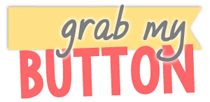
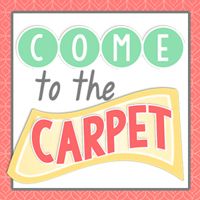

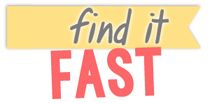

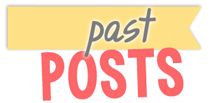
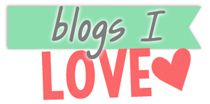




0 comments:
Post a Comment